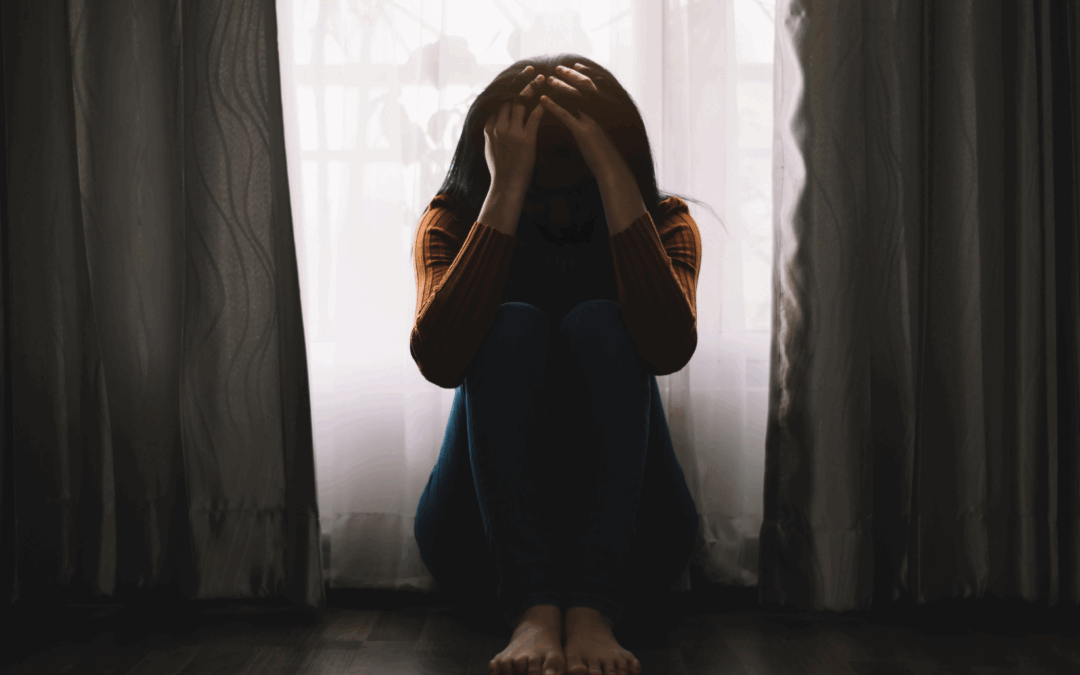The air shifts as the leaves start to fall.
Days feel shorter, nights stretch longer, and suddenly, there’s a heaviness in the air that doesn’t match the crisp beauty of autumn.
If you’ve ever felt yourself sinking into sadness once fall arrives, you’re not alone. Many people notice changes in their mood, energy, and even their sense of hope this time of year.
Some call it the “autumn blues.” Others know it more formally as fall depression.
But here’s the thing: not every low mood is “just the season.” Sometimes, what feels like ordinary fall depression is actually a deeper struggle—something that deserves more care, more support, and maybe even professional help.
Let’s talk honestly about what that looks like, how to spot the signs, and why reaching out isn’t weakness but survival.
What is seasonal depression called?
The medical name for seasonal depression is Seasonal Affective Disorder (SAD). It’s a very real type of depression that tends to show up at the same time each year, often in the fall and winter months when daylight grows shorter.
SAD isn’t just about feeling a little down when it gets dark at 5 p.m. It can bring:
- Persistent sadness or hopelessness
- Loss of interest in things you normally enjoy
- Trouble sleeping (or wanting to sleep all the time)
- Feeling drained, sluggish, or “stuck in mud”
- Changes in appetite (craving carbs is common)
- Difficulty concentrating
- In severe cases—thoughts of suicide
While people sometimes make light of “fall depression,” the reality is that SAD can interfere with daily life, relationships, and wellbeing in very real ways. Naming it for what it is—Seasonal Affective Disorder—matters.
Because once we recognize it, we can respond to it.
Why do I get SAD during fall?
You might wonder: Why does fall hit me so hard? Why does my mood dip just as the pumpkin spice lattes roll out and everyone else seems excited for sweater weather?
There’s science behind it.
- Less sunlight → Shorter days mean less natural light. Sunlight helps regulate your circadian rhythm (your body’s internal clock) and boosts serotonin—the “feel-good” chemical in your brain. Less light = less serotonin, which can trigger depression.
- Melatonin changes → Darkness increases melatonin, the hormone that helps you sleep. When nights are long, your body may produce more melatonin than usual, leaving you feeling drowsy or unmotivated.
- Vitamin D drop → Sunlight is our best natural source of vitamin D. Without enough of it, some people experience worsened mood and fatigue.
- Emotional associations → Fall can also stir personal triggers—memories of loss, anniversaries of hard times, or the pressure of the upcoming holidays. For people already navigating mental health struggles, the season can feel like a weight that keeps piling on.
This is why fall depression isn’t “all in your head.”
Your brain and body are literally responding to environmental shifts. The challenge comes when those shifts combine with life stressors, trauma, or existing mental health struggles. That’s when fall depression can become something heavier—something that requires help.
How to deal with fall depression?
If you notice yourself slipping into fall depression, the first step is compassion. It’s not your fault.
You’re not weak. You’re not lazy. You’re experiencing a biological, emotional, and seasonal challenge that many people face!
Here are some real, human ways to cope:
1. Get more light
Light therapy lamps are often recommended for SAD. They mimic natural sunlight and can help regulate mood. Even 20–30 minutes in the morning can make a difference. And whenever possible, step outside—even on cloudy days. Fresh air and natural light matter.
2. Keep moving
Exercise isn’t just about fitness—it’s medicine for your brain. Even gentle movement like walking, stretching, or yoga can help release endorphins that fight depression. The hardest part is often starting, so be gentle with yourself. A five-minute walk is still a win.
3. Stay connected
Fall depression often makes people want to withdraw, but isolation feeds the cycle. Reach out to a friend, join a support group, or lean into family time. Sometimes just sitting with someone—even in silence—reminds you that you’re not carrying this alone.
4. Create warmth
Rituals matter in darker seasons. Light candles, make tea, cook comforting meals, wrap yourself in blankets. Joy doesn’t have to be grand—it can be found in tiny, cozy moments that remind you your body and soul deserve care.
5. Consider professional support
If your fall depression feels overwhelming, therapy can help. Therapists trained in trauma, grief, or seasonal depression can help you name what you’re feeling and build tools for coping. Medication may also be an option if symptoms are severe.
6. Watch for warning signs
This part is important: if your sadness turns into hopelessness, if you start thinking life isn’t worth living, or if suicidal thoughts come up, please don’t dismiss it as “just fall depression.” This is when professional support is not optional—it’s lifesaving.
Call a trusted friend. Reach out to a therapist. In the U.S., you can dial 988 for the Suicide & Crisis Lifeline. Wherever you are, seek out your local crisis line. You don’t need to carry this weight in silence.
A note on prevention and awareness
Talking about fall depression openly matters because too often people dismiss it as “just the weather.” But recognizing SAD and acknowledging the link to suicide prevention can literally save lives.
Suicide risk increases when depression—seasonal or otherwise—is left untreated. By being honest about how heavy fall can feel, by sharing stories, and by checking in on one another, we create community care.
If you’ve struggled with fall depression before, think about building a “seasonal care plan.” This might include:
- Booking therapy appointments before fall begins
- Setting reminders to take walks during daylight
- Scheduling regular check-ins with friends or family
- Preparing meals or activities that bring you joy ahead of time
Proactive care can soften the impact of seasonal shifts and remind you that support doesn’t have to start at rock bottom.
Final Thoughts: You’re Not Alone in Fall Depression
Fall depression is very real.
For some, it’s a passing heaviness that lightens with small adjustments. For others, it’s a form of Seasonal Affective Disorder that requires more support. For a few, it can spiral into suicidal thoughts.
Wherever you find yourself on that spectrum, your experience is valid. You’re not making it up. And you don’t have to go through it by yourself.
If this season feels especially heavy, let someone in. Tell a friend, a partner, a therapist. Healing doesn’t happen in silence—it happens in connection.
Fall will always come, year after year. But depression doesn’t have to own your autumn. With light, care, and community, there’s a way through. And if the weight feels unbearable, remember: reaching out for help is not weakness—it’s courage.
Because your life matters. Your presence matters. And there is more than enough reason to keep going, even in the longest nights.

